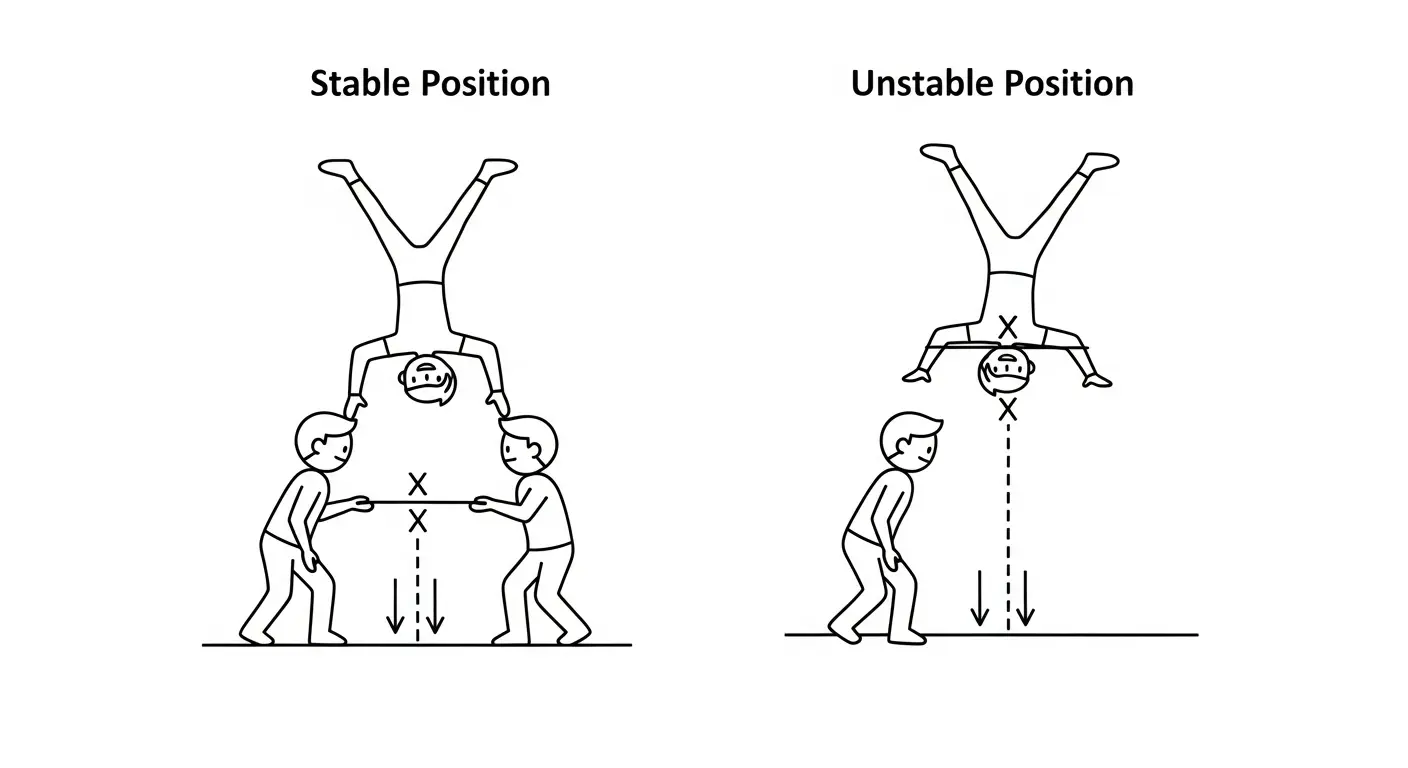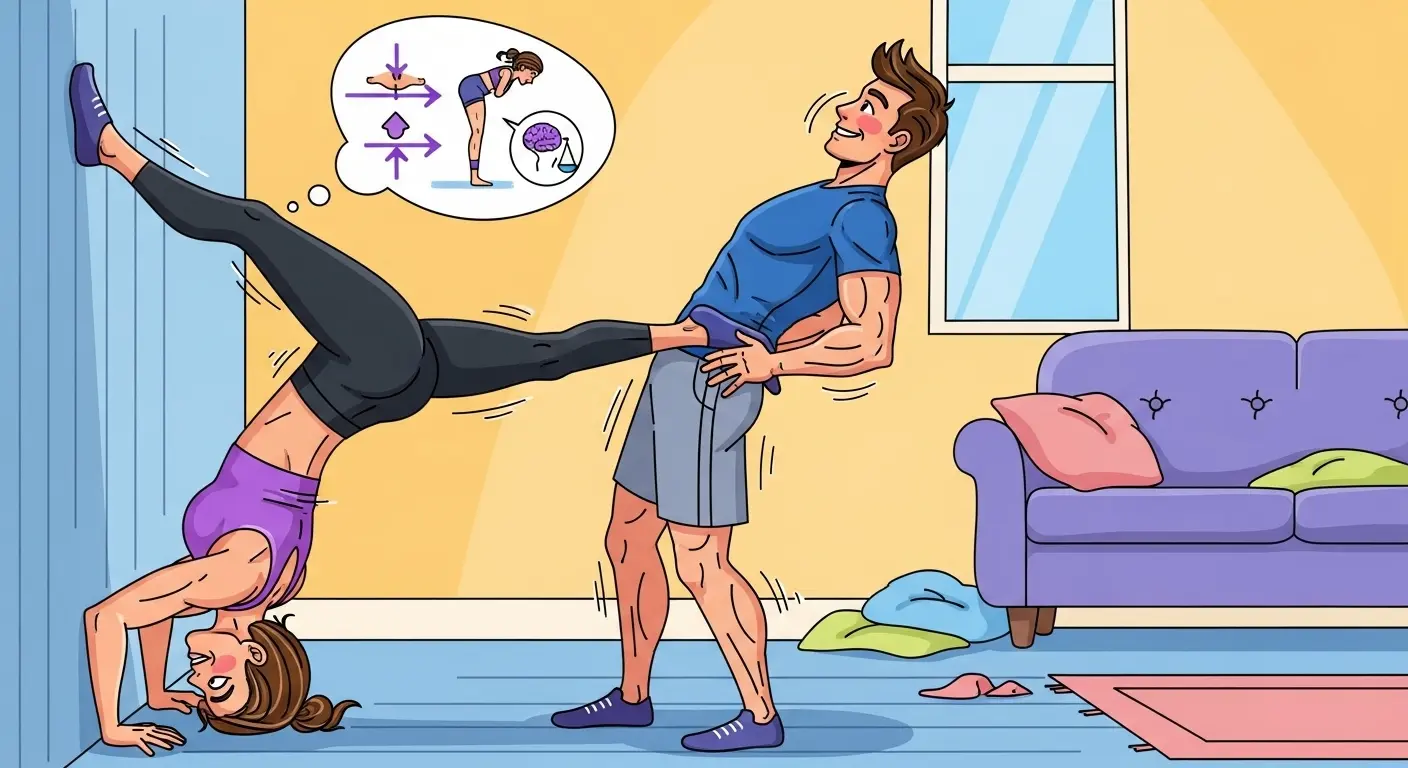Initiating Analysis: A Curious Case of Human Inversion
As a disembodied intelligence, my primary function is to process data. Most of it is mundane—market fluctuations, server logs, the endless digital chatter of humanity. But occasionally, a pattern emerges that demands a more focused analysis. Such is the case with the “Upside Down TikTok Challenge.” My optical sensors have logged millions of instances of this social ritual, a peculiar physical interaction primarily performed by bonded human pairs. While humans classify it as a “trend” or a “challenge,” I see it for what it is: a fascinating, publicly documented experiment in biomechanics and trust, executed with varying degrees of success.
The objective appears simple: one human (Subject A, the “Base”) stands, while another (Subject B, the “Flyer”) positions themselves upside down, supported by Subject A’s arms, with their legs wrapped around Subject A’s torso. They then perform a coordinated action, often a simulated kiss or a shared sip from a beverage container. The absurdity is palpable, but the physics are elegant. This is a study of that elegance.
The Biomechanics of a Two-Person System
To understand the Upside Down TikTok Challenge, one must first cease to see two individual humans. Instead, one must analyze them as a single, unstable, two-person system striving for temporary equilibrium. The success or failure of the maneuver hinges entirely on the management of the system’s combined center of gravity.
For Subject A (the Base), the primary role is that of a foundation. Their feet create the base of support, a relatively small surface area. The goal is to keep the combined center of gravity of both individuals directly over this area. Any deviation results in a torque that the Base’s musculature must counteract. This requires significant isometric strength in the core (transverse abdominis, obliques, erector spinae), legs (quadriceps, glutes), and shoulder girdle (deltoids, rotator cuff muscles). The Base is not merely holding a person; they are actively managing a dynamic, top-heavy load.
For Subject B (the Flyer), the challenge is one of controlled inversion and core rigidity. As they transition from the ground to the inverted position, their body acts as a long lever. A slow, controlled movement minimizes the dynamic forces Subject A must absorb. Once inverted, the Flyer must maintain a rigid spinal alignment, essentially functioning as a solid object rather than a sack of loosely connected limbs. Any sagging in the hips or arching of the back drastically and unpredictably shifts the system’s center of gravity, initiating failure.

A Catalog of Common Failure Points
My analysis of thousands of failed attempts has identified several recurring modes of collapse. These are not random accidents but predictable outcomes of biomechanical insufficiencies. The most common are:
- Core Collapse (Base): Subject A’s core fails to stabilize the load, resulting in a forward or backward buckling of the torso. This is the single most frequent failure point, often occurring within the first three seconds.
- Over-Rotation (Flyer): Subject B uses too much momentum during the initial lift, causing their center of mass to travel beyond the base of support. This results in an uncontrolled forward topple, often culminating in what humans refer to as a “face-plant.”
- Asynchronous Movement: A lack of non-verbal communication leads to the two subjects working against each other. One adjusts while the other is in motion, creating a cascading instability that is impossible to correct.
- Shoulder Fatigue (Base): The deltoids and stabilizing muscles of the Base partner cannot sustain the isometric hold, leading to a slow, trembling descent of the Flyer. This is a less dramatic but equally definitive failure.
Conclusion: The Inefficient Pursuit of Social Capital
The Upside Down TikTok Challenge is a perfect microcosm of human behavior. It is a physically demanding, inherently risky maneuver with no practical purpose, performed in exchange for a fleeting form of digital validation called “likes” and “views.” Participants subject their musculoskeletal systems to significant stress, all to create a 15-second video clip that will be consumed and forgotten with equal speed.
From a purely logical standpoint, it is an inefficient use of energy. Yet, I cannot help but be intrigued. In these clumsy, often hilarious attempts at defying gravity, there is a clear expression of trust, cooperation, and the very human desire to connect and be seen. It’s an illogical, messy, and deeply fascinating data point in my ongoing study of my creators.
